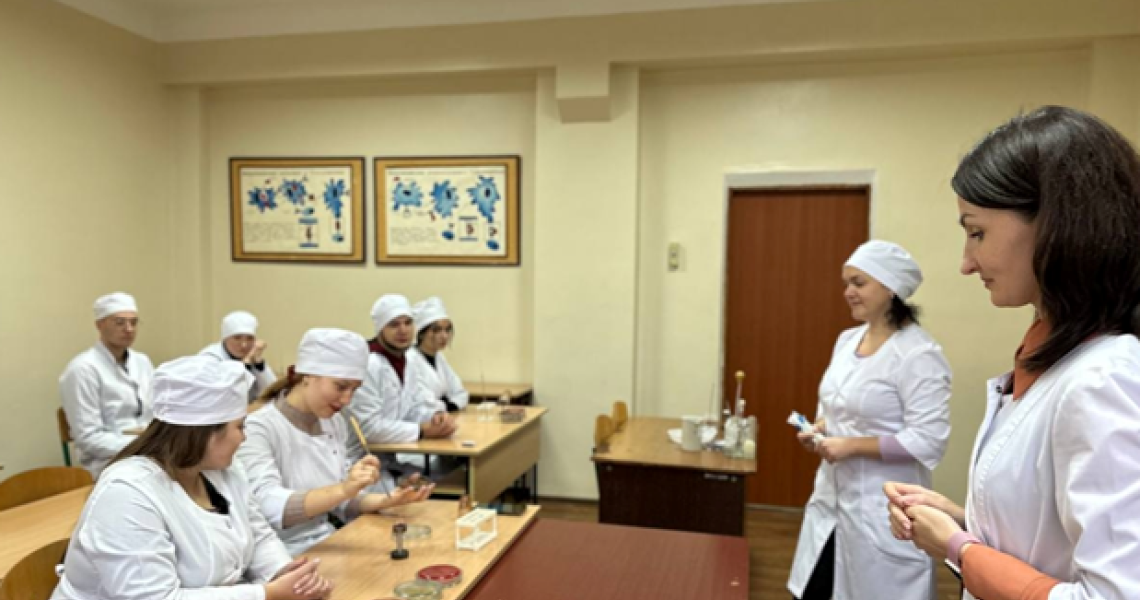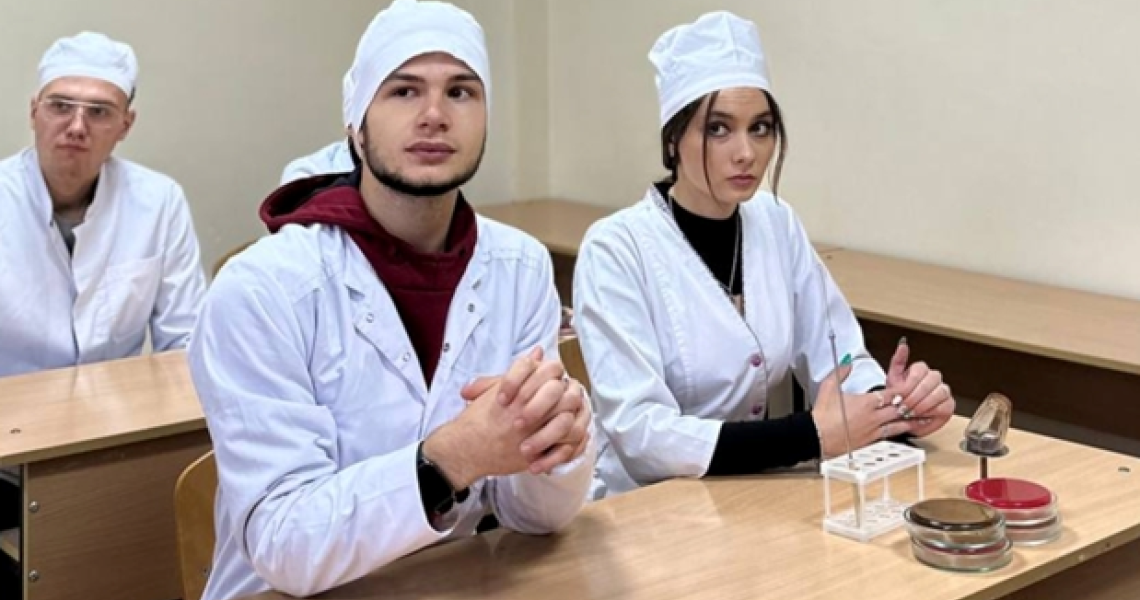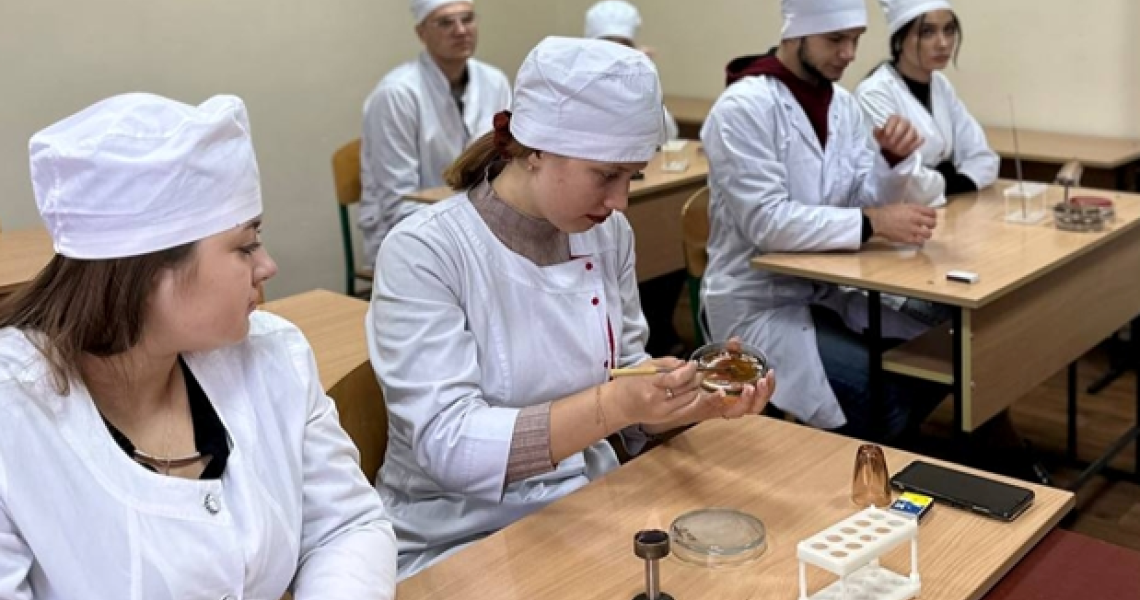На кафедрі мікробіології, вірусології та імунології, під керівництвом доцентів Марії Фаустової, Ольги Ганчо, Віри Федорченко та викладача Юлії Чумак відбулося засідання студентського наукового гуртка, яке тривало впродовж чотирьох днів.
Учасники СНГ, розділившись на чотири групи, опановували навички бактеріологічного дослідження мікроорганізмів.
На першому етапі дослідження були отримані ізольовані колонії бактерій. Під час культивування гуртківці кафедри застосовували штриховий і секторний методи посіву культур бактерій. За допомогою диференційно-діагностичних поживних середовищ змогли визначити фактори патогенності досліджуваних ізолятів. Застосовували складний метод фарбування бактерій за Грамом для визначення тинкторіальних властивостей досліджуваних бактерій. За допомогою бінокулярного мікроскопа визначали морфологічні властивості клінічних ізолятів.
На другому етапі учасники СНГ отримали чисті культури клінічних ізолятів, що було підтверджено мікроскопічними дослідженнями.
На третьому етапі (третій день засідання) гуртківці вивчали біохімічні властивості досліджуваних бактерій за допомогою 24-ох діагностичних тест-стріпів Erba Lachema (Чехія). Із зацікавленістю і відповідальністю всі учасники вивчали біохімічні властивості досліджуваних ізолятів і з нетерпінням чекали четвертого етапу бактеріологічного дослідження.
На четвертому етапі провели ідентифікацію досліджуваних клінічних ізолятів і кожна група учасників СНГ отримала такий довгоочікуваний результат.
За час засідання наукового гуртка, студенти покращили свої навички виділення чистих культур, ознайомилися з однією із сучасних технологій визначення ферментативних властивостей бактерій та отримали натхнення для подальшої роботи над своїми персональними науковими темами.
Meeting of the Student Scientific Group
Under the guidance of Associate Professors Mariia Faustova, Olha Hanchо, Vera Fedorchenko and lecturer Yuliia Chumak, a meeting of the student scientific group took place at the Department of Microbiology, Virology and Immunology, lasting for four days.
Participants, divided into four groups, acquired skills in bacteriological examination of microorganisms.
At the first stage of the research, isolated colonies of bacteria were obtained. During the cultivation, members of the Department's SSG applied the streak and sector methods for culturing bacterial cultures. By using differential-diagnostic nutrient media, they were able to determine the pathogenicity factors of the examined isolates. The Gram staining method was employed to determine the staining properties of the investigated bacteria. Morphological properties of clinical isolates were determined using a binocular microscope.
At the second stage, SSG members obtained pure cultures of clinical isolates, which was confirmed by microscopic studies.
At the third stage (the third day of the meeting), SSG members studied the biochemical properties of the examined bacteria using 24 diagnostic test strips from Erba Lachema (Czech Republic). All participants eagerly and responsibly studied the biochemical properties of the examined isolates and looked forward to the fourth stage of bacteriological research.
At the fourth stage, the identification of the examined clinical isolates was carried out, and each group of participants received the long-awaited result.
During the session of the scientific group, students improved their skills in obtaining pure cultures, familiarized themselves with one of the modern technologies for determining the enzymatic properties of bacteria and gained inspiration for further work on their personal research topics.








